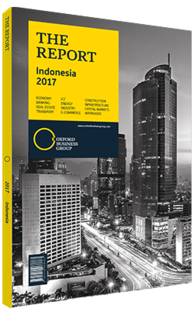Indonesia's rubber producers seek to counter dwindling global demand
The rubber segment in Indonesia dates to the British colonial days of the 19th century, and the industry has remained a steady contributor to the economy and one of the largest employers in agriculture. In some ways rubber continues to be rooted in its history, and remains dominated by small, often family run, smallholder farms that make up roughly 85% of the industry in Indonesia.
More recently lower global demand for the product has led to growing stockpiles and depressed prices. As a result of the dwindling demand for rubber, output in Indonesia and other rubber-producing nations has slowed considerably. Consumption growth slowed before reaching a state of near equilibrium in 2014, although considerable surplus stocks still remained.
The situation became serious enough in 2015 that commodity prices reached the point where it became unprofitable for many Indonesian farmers to produce and sell rubber at all and with little incentive to achieve greater yields. Rubber production has declined from a high of 3.24m tonnes in 2013 to 3.15m tonnes in 2014 and 3.11m tonnes in 2015. As a result, the value of manufactured rubber products exported from the country has declined from a high of $14.1bn in 2011 to $5.8bn in 2015, and this was in spite of the fact that 178,000 fewer tonnes were exported in 2011.
Oil
As petroleum is a key ingredient in synthetic rubber, continuing low oil prices are also correlated to the weaker price for rubber. However, the impact of lower oil prices on commodity prices is muted as natural rubber is still necessary in the production of numerous products, particularly tires, which require some specific qualities only found in natural rubber. For instance, tires for smaller passenger vehicles require natural rubber contents ranging from 12% to 20% depending on the model, while larger truck and bus tires require even more natural rubber.
In an effort to prop up prices, which have tumbled nearly 70% since 2011, the world’s top three rubber producers agreed in February 2016 to cut exports collectively by nearly 20% in an effort to stem the steep decline in prices of the commodity. Recognised collectively as the International Tripartite Rubber Council, Indonesia, Malaysia and Thailand, which together produce around 70% of the world’s rubber, agreed that they would curb exports by 615,000 tonnes over the six-month period starting in March 2016.
“We were initially sceptical that the move would have an immediate short-term impact, but since the announcement we have seen continual increases in rubber prices, although not to the levels seen before the decline,” Widyantoko Sumarlin, general manager of business development for the crumb rubber processor unit of Kirana Megatara Group, told OBG. “Since 2011 prices have been on a steady down slope, but we believe that prices may have hit rock bottom in February 2016, and from this we can surmise the market looked at the announcement favourably.”
Price Spike
The strategy appeared to work initially as rubber prices on the Tokyo Commodity Exchange spiked from around JPY150 ($1.24) per kg in mid-February to more than JPY200 ($1.66) per kg by April 2016. The surge proved short-lived, as prices receded shortly thereafter and have been fluctuating in the JPY150-165 ($1.24-1.37) per kg range in mid-2016.
For Indonesia, this prolonged price shortage has resulted in many smallholder farmers cutting down their now significantly less profitable rubber trees in favour of other cash crops such as palm oil or cassava. While this may achieve short-term economic gains for the farmers, the long-term implications for the industry as a whole are darker given the relatively long lag time needed for rubber trees to reach productivity, as seedlings do not reach their optimal production range for six or seven years after planting. In addition, the rubber tappers employed in the field have also moved on to harvesting alternative crops such as palm oil, or have chosen to change professions entirely.
You have reached the limit of premium articles you can view for free.
Choose from the options below to purchase print or digital editions of our Reports. You can also purchase a website subscription giving you unlimited access to all of our Reports online for 12 months.
If you have already purchased this Report or have a website subscription, please login to continue.

